SUMMARY
This is AI generated summarization, which may have errors. For context, always refer to the full article.
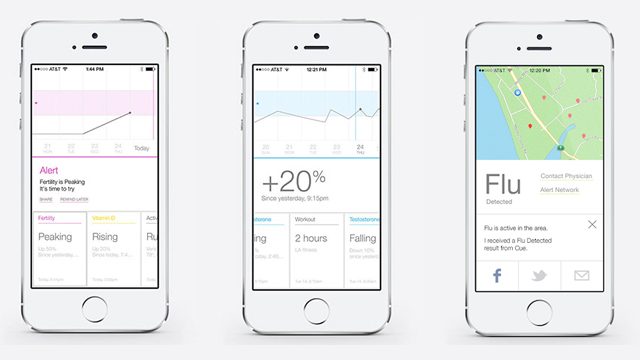
Convenience is the name of the game in the mobile app generation. GPS devices, cameras, media players, voice recorders – all of these were at one point in time, standalone gadgets. Today, they’ve been condensed in some form or another into your handy device, the smartphone.
The medical field is no stranger to said phenomenon. In March, a group of Harvard Medical School professors sought to bring semen testing home with their own app and smartphone attachment. A Filipino student, in the same month, won an award for developing an app that teaches proper cardiopulmonary resuscitation (CPR) procedure. These are just two. Below, we’ve found a few others that attempt to simplify certain medical procedures and tests or offer some form of medical help with one-tap ease.
1) A fertility tracker
Those who have had difficulties having a baby may want to give the Trak app a look. Trak is a male fertility testing system that evaluates one’s fertility risks and offers personalized tips to track and improve reproductive health over time.
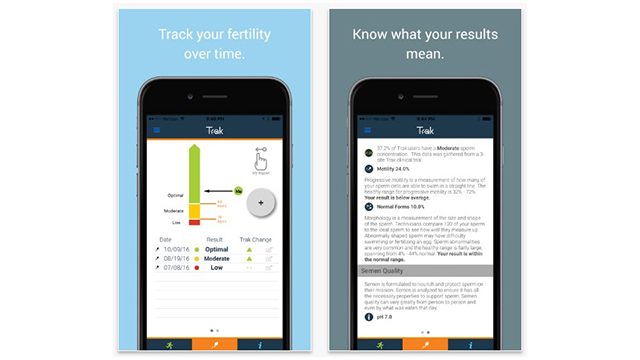
After visiting the doctor, Trak users enter their semen analysis results to get an idea of where they stand. The app also features a questionnaire about health and habits – a user’s answers to which are used to weigh how “sperm-friendly” (rated from 0 to 100) their lifestyle is.
Users can also keep track of their day-to-day activities and health habits. With that data, the app gives users personalized tips to improve reproductive health.
It also gives users an in-depth breakdown of what their semen analysis means and how it compares to others’, as well as medical guidelines.
Trak is a product by Sandstone Diagnostics based in California, US.
2) A blood sugar monitoring system
Dario is a glucose monitoring system that includes a glucose meter, a disposable test strip cartridge, a lancing device to draw blood with, and an associated app. The device plugs right into your smartphone and gives you a blood glucose reading in about six seconds.
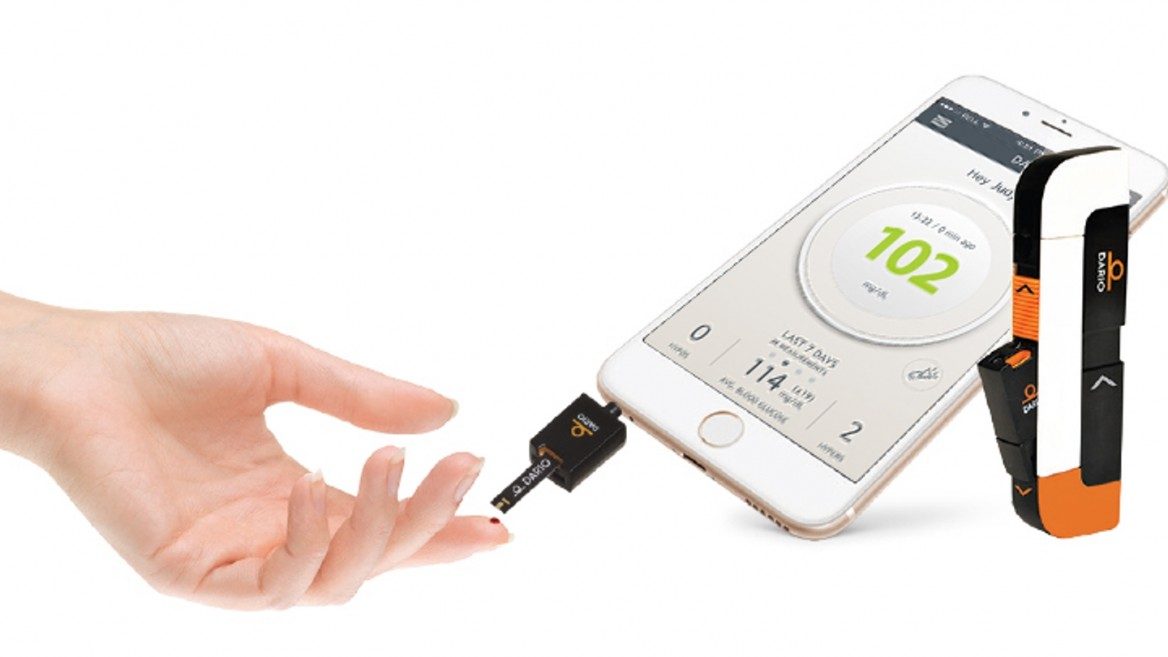 The system offers convenience on multiple fronts. First, it automatically logs your blood glucose measurements and can instantly share the results with your doctors, no matter where in the world you might be. It’s also very small and fits easily in a pocket or purse.
The system offers convenience on multiple fronts. First, it automatically logs your blood glucose measurements and can instantly share the results with your doctors, no matter where in the world you might be. It’s also very small and fits easily in a pocket or purse.
Another handy feature is the Dario web portal, which allows users to record, track and analyze their data and share it with doctors or family members.
The monitoring system costs $69.99, while a monthly plan that includes 50 strips costs $16.50 per month. There is also a pay-as-you-go option. The system received US FDA clearance in December 2015, according to parent company, DarioHealth.
3) Cue
The Cue system is like having your own personal health monitoring team right at home.
There are two main components to Cue. The first is a set of devices you use to collect samples with, which can then be slid into a cartridge. The device analyzes the sample in minutes and then sends the results to the system’s other component, a smartphone app, via Bluetooth.
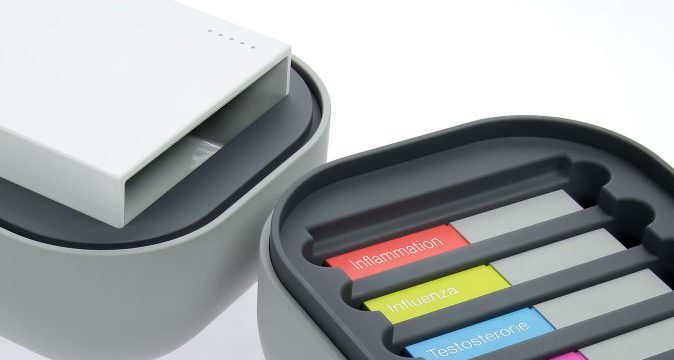
Cue was designed to track and evaluate multiple health indicators. It analyzes testosterone using a saliva sample, fertility, inflammation and vitamin D using blood samples, and influenza using a swab from your nose.
The app captures all of this data and visualizes it with interactive charts. Users can also log their eating and activity habits into the app to receive personalized alerts and recommendations.
Cue, the company, was founded in 2009. One of the founders told TechCrunch in an interview that the idea for the product came when they saw how the swine flu scare in 2009 flooded healthcare systems.
4) A connected stethoscope and thermometer
CliniCloud, the company, attempts to improve current medical tools with a connected non-contact thermometer and a stethoscope for home use.
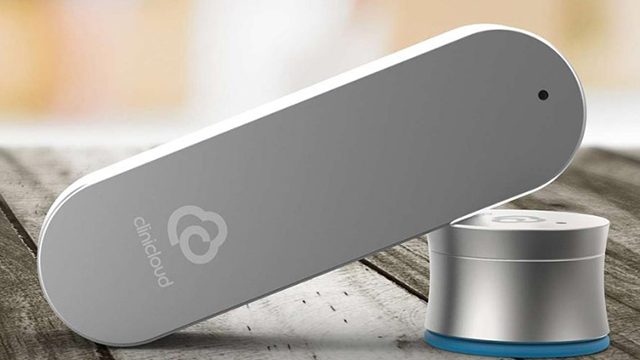
Like many of the other devices on this list, there is also an associated CliniCloud app that stores health data and high-fidelity audio recordings from the stethoscope. The thermometer also sends data to the app. The data can then be connected to remote patient monitoring platforms and health systems to help your doctor easily gather, view and analyze your information.
The complete kit costs $149. The idea for the product won Microsoft’s software development contest Imagine Cup back in 2012.
5. A connected blood pressure monitor
High blood pressure is often called “the silent killer” because symptoms usually don’t appear until after it has done serious long-term damage to your heart and arteries. There are plenty of at-home blood pressure monitors on the market, but one of the coolest is the wireless blood pressure monitor from Withings, a Nokia-owned company.
The device is a simple cuff you slip around your arm, pictured below.
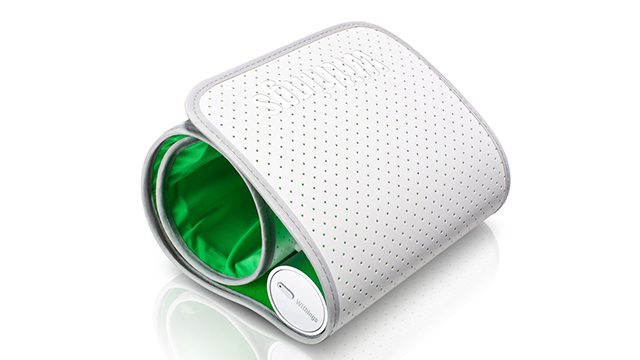
When you turn the device on, it automatically launches the Health Mate app, takes your blood pressure and stores the readings in the app. Your results sync with the company’s Health Cloud platform and can be visualized in an easy-to-read chart.
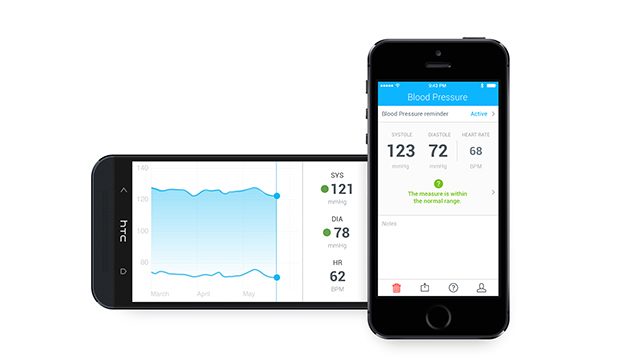
The monitoring device costs $99.99, and the Health Mate app is an additional $4.99. The app is currently only available for iOS devices.
6. A smartphone attachment that checks for ear infections
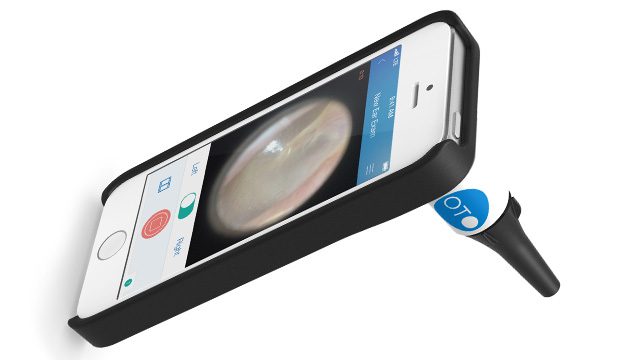
The Oto is a smart device that allows you to check your family’s ears using your phone.
If you think one of the kids has an ear infection, connect the device to your iPhone (no Android version yet), follow the directions from the dedicated Seymour app and capture video of your child’s eardrum.
Then, using the app, you can send the video to an on-call doctor at CellScope and receive an answer within two hours on what type of care, if any, is necessary.
The hardware itself costs $299. The Oto is a product by US-based CellScope. – Rappler.com
All photos are from their respective manufacturer’s website.
Add a comment
How does this make you feel?
There are no comments yet. Add your comment to start the conversation.